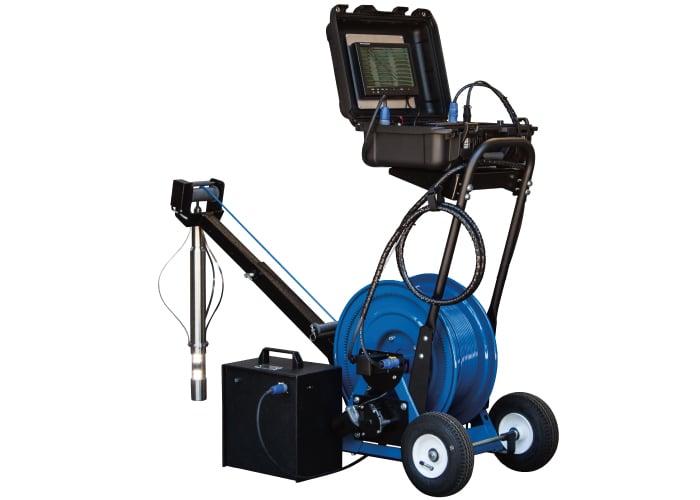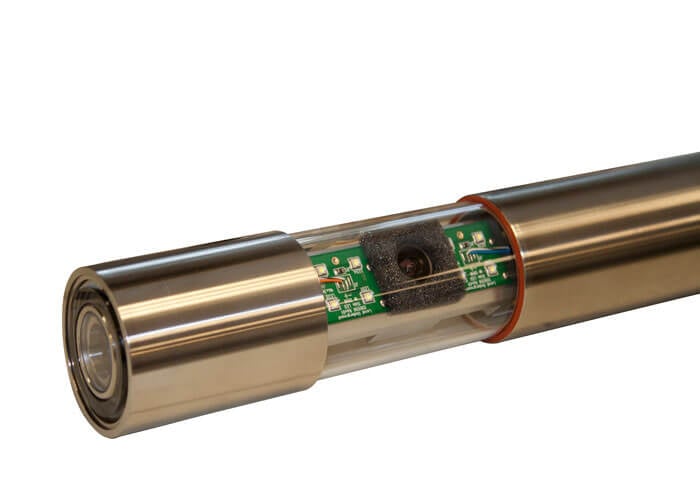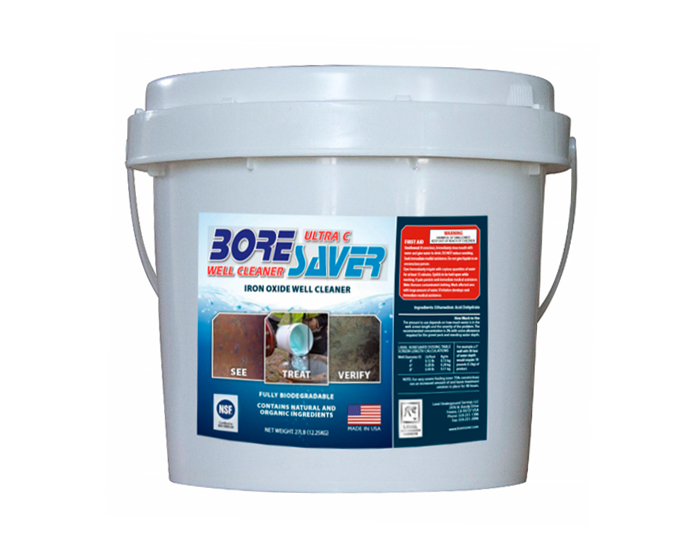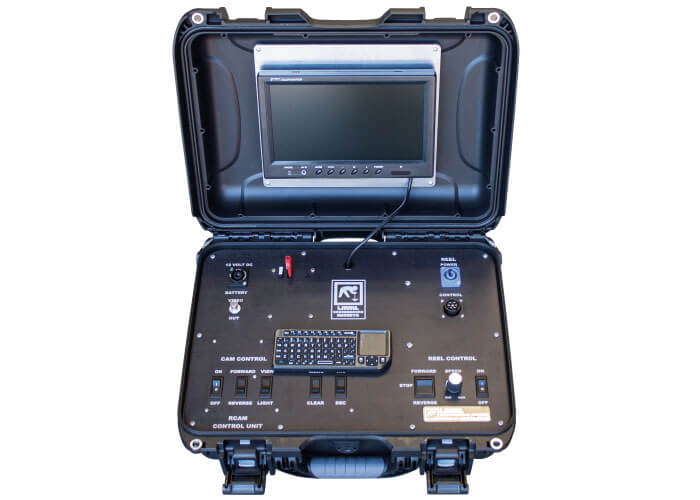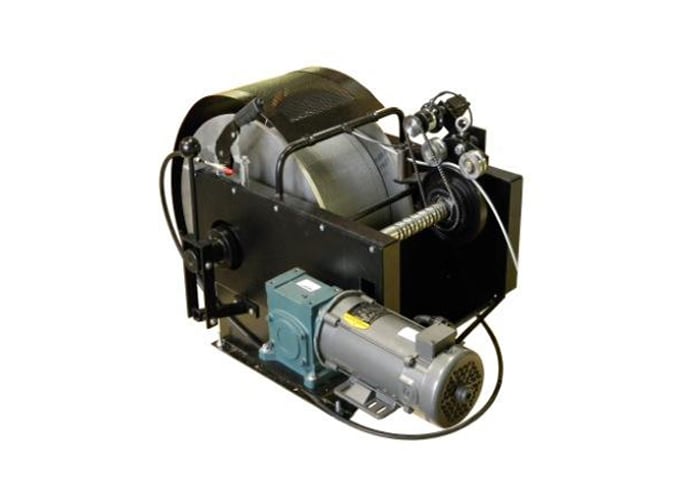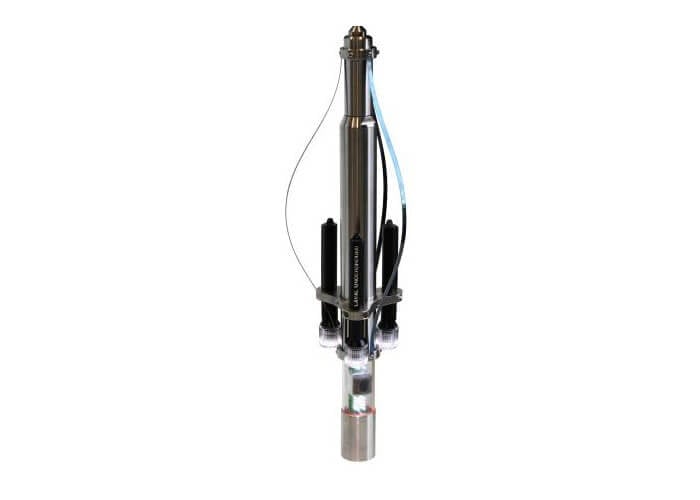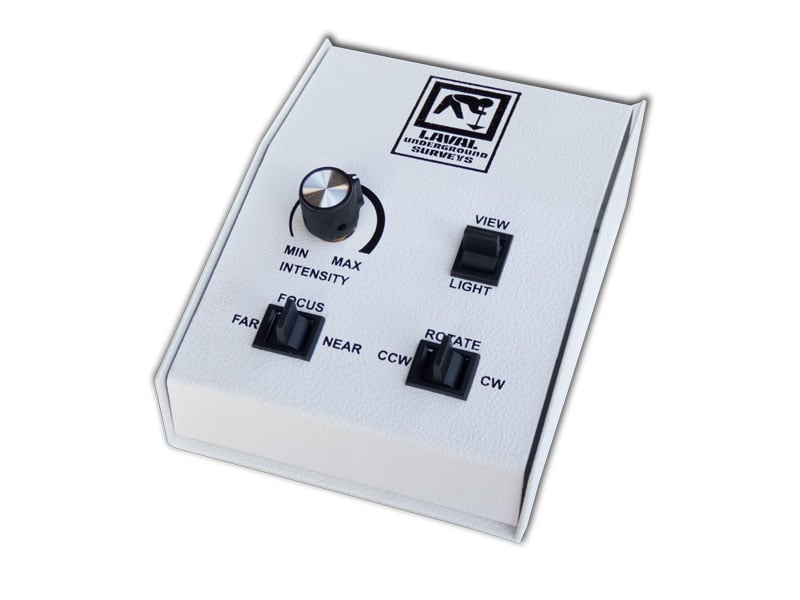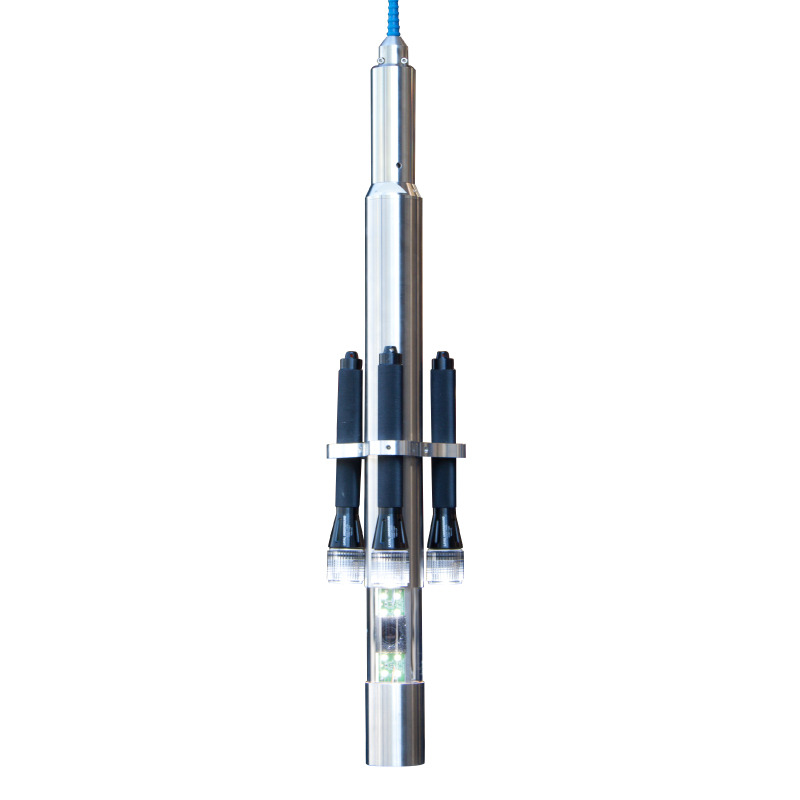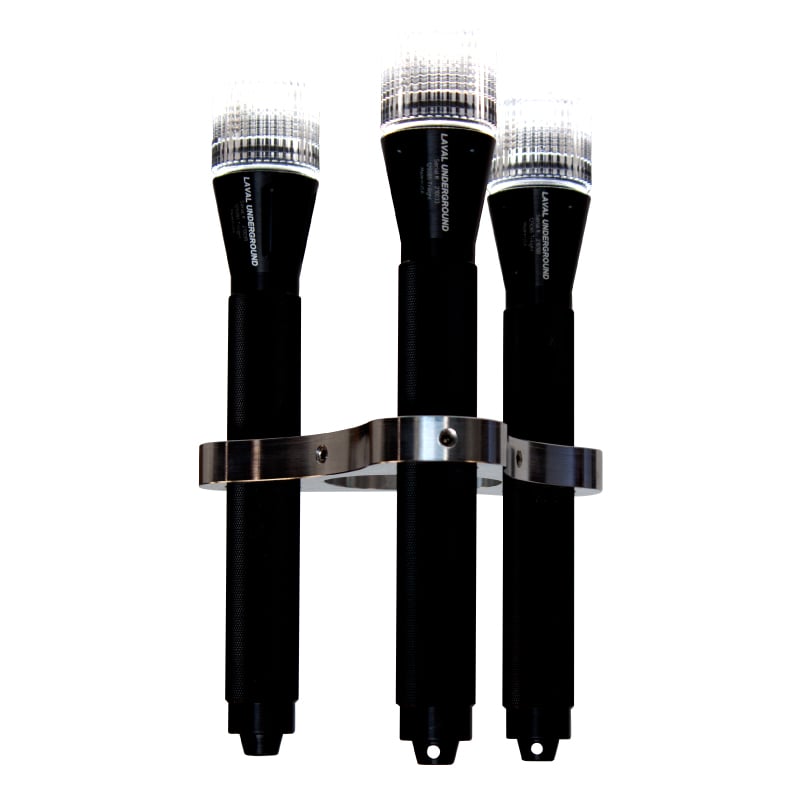R-Cam TriLight pro
TriLight Pro is an Auxiliary Lighting System to supplement the standard lighting of the R-Cam 1000 and R-Cam 1300, consisting of three military grade dive lights custom manufactured to withstand 2,200 feet (670.5 m) of submergence.
Overview
Updated for 2021, the TriLight Pro features three military-grade dive lights, each with a high-intensity LED light that provides up to 20 hours of light. The TriLight Pro is mounted to the camera body via an adjustable stainless steel collar and set screws that allow the operator to utilize the TriLight Pro as a forward view light or a supplemental sidelight.
Depending on water clarity, the TriLight Pro expands the viewing range of the camera to accommodate well diameters of 14 to 20 inches (35.6 to 50.8 cm). The individual lights are powered by three AA batteries (included) that provide 20+ hours of light.
- 3 military grade dive lights
- Pressure rated to 2,200 feet (670.5 m) of submergence.
- Powered via easily accessible AA batteries
- One high intensity LED in each light
- 250 lumens per light
- Lamp Life of 10,000+ hours
- Mounted by an adjustable stainless steel collar
- Includes a removable glare guard to focus the beam
- Limited Lifetime Warranty
- Made in the USA
- U.S. Patent #6,168,288
What Customers Say
The camera is excellent and it makes a night and day difference in our business.
Gary Shawver
Shawver Well Company
I used to borrow a friendly competitor’s camera. He had a small one with a hand reel and a tripod made of PVC. It worked for me at times, but the R-cam 1000 is heads and shoulders above that.
Scott Miller
Northern Virginia Drilling
I hoped we would use our new R-CAM 1000 at least 1 time per month... but we're averaging closer to 10. Plus, I don't have to subcontract the work out to my competition anymore, and I'm picking up a bunch of additional well rehab work.
Al Boone
Boone Water Systems, Inc
Frequently Asked Questions
The downhole facing SC-166 is suitable for boreholes up to 10 inches in diameter. The R-CAM dual view camera can view boreholes up to 16 inches in diameter. The DC5150 is suitable for borehole diameters up to 30 inches in diameter. Please note, visibility downhole will be impacted by the clarity of the fluid and the available light.
Every camera system will eventually require a repair to the cable head, the point at which the cable and camera physically connect. Over time, the internal connections within the cable head can be strained to the point where they disconnect and cause interference or a complete loss of the video signal. To expedite the repair process, we have cable head repair kits available for both portable systems and large vehicle-based systems.
Conducting surveys with the included centralizers and available lens shield accessory is the best way to ensure that the camera head remains protected downhole. When not in use, store the camera head in an area where it will be safe from unintentional drops or damage. If your camera system is damaged, we offer full repair services at our headquarters in Fresno, California.
